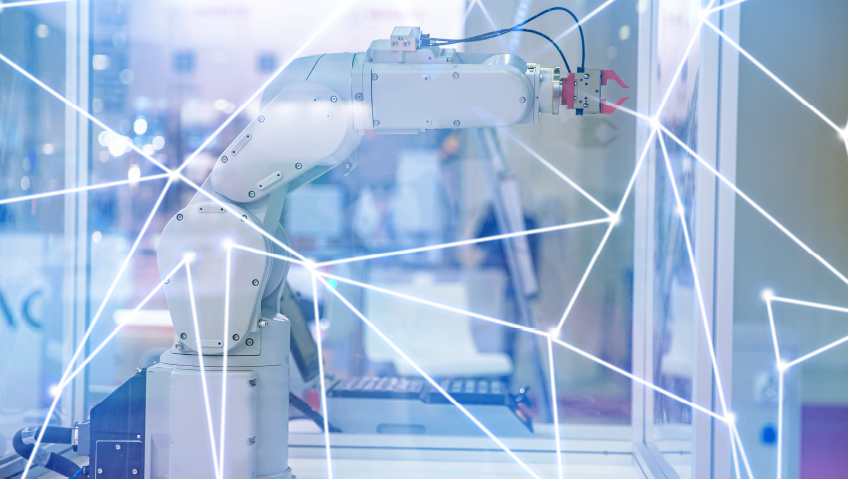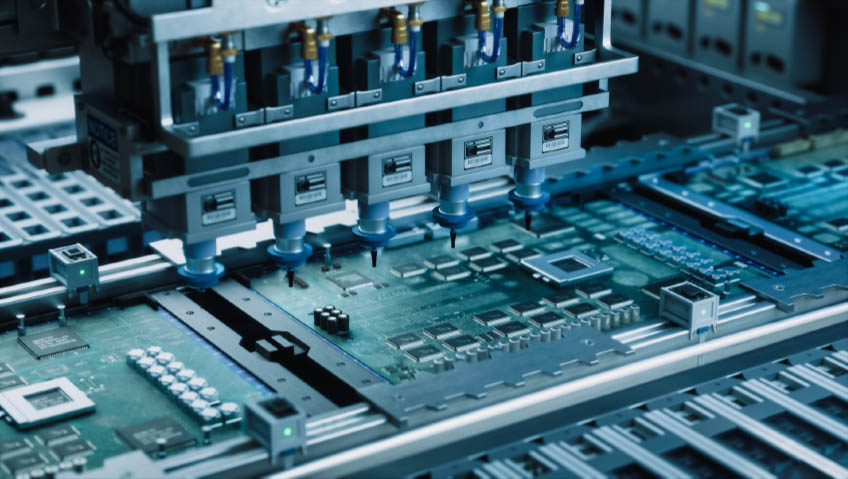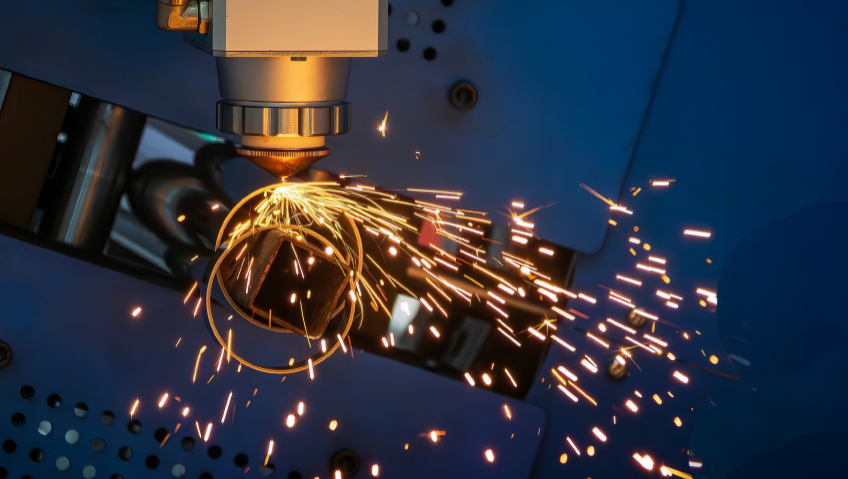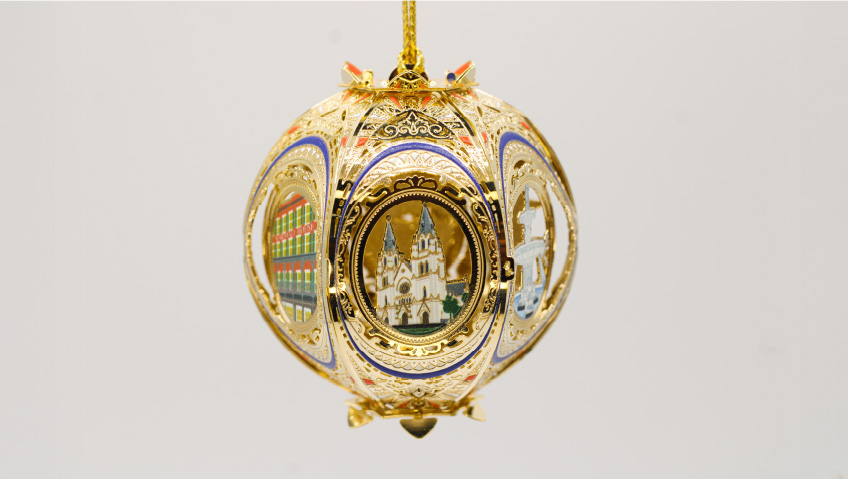Metrology equipment manufacturers are increasingly adding Industry 4.0 features to instruments that measure machining tolerance. The goal is to improve accuracy, speed inspection times, enhance data collection and analysis, and lower verification costs.
Industry 4.0, or the ‘fourth industrial revolution,’ refers to the application of cutting-edge technology in advanced manufacturing settings. In a so-called ‘smart factory,’ sensors, cameras, radio frequency identification (RFID) tags, and probes monitor manufacturing operations and transmit data to computers and cell phones via the Internet of Things (IoT). Connected machines and equipment can be remotely monitored and controlled, and production information can be stored in cloud computing databases for future reference.
Machining tolerance—also called dimensional accuracy—is, according to the blog for the Universal Technical Institute (UTI), a chain of technical colleges based in Phoenix, Arizona, “the amount of permitted variance in the dimension of a part. This involves setting a maximum and minimum dimensional limit for the part. Essentially, this process defines how wide the tolerance can be while staying within the necessary range to create a part that meets the required specifications. If a part is manufactured with dimensions that are out of tolerance, it is considerable unusable for its desired purpose.”
It is imperative to maintain tolerance for a variety of reasons, including quality control, production uniformity, and regulatory compliance. These factors are particularly crucial in medical and aerospace manufacturing. If a component malfunctions on a rocket, catastrophe can ensue. In similar fashion, a poorly made medical device—especially one implanted in a human body—can cause injury or death. Dimensional accuracy is vital for all parts made for these sectors, and not surprisingly, the medical and aerospace manufacturing sectors are heavily regulated.
“In industries for which regulatory compliance is necessary, dimensional measurement ensures that the required specifications are met. Regulatory bodies such as the [Food and Drug Administration] and [Federal Aviation Administration] often have requirements regarding the dimensions of certain components,” notes Medical Design Briefs, a source of medical sector coverage from Tech Briefs Media Group of New York City.
Part measurement and inspection can cover “virtually any physical characteristics,” continues Medical Design Briefs. Beyond basic dimensions and geometric characteristics, the inspections can measure such characteristics as position, uniformity, and sharpness.
Three main categories of dimensional measurement instruments are used. Hand tools, including calipers, micrometers, and gauges, are some of the oldest, most common measurement devices used in manufacturing operations. Contact systems involve a sensor or probe that physically touches the part or object being measured. Coordinate measuring machines (CMMs) fall into the contact sensor system category. As the name implies, non-contact optical sensor systems do not involve contact with the object being measured. Three-dimensional scanners, for example, utilize lasers to perform measurements.
In recent years, these instruments have started incorporating Industry 4.0 characteristics.
Some non-contact inspection systems now feature “3D smart sensors with built-in software [which] can be used to automatically assemble the multiple profiles into a complete 3D map of the object surface,” reads information from the blog for Keller Technology Corporation.
A type of coordinate measuring machine called an optical CMM blends contact and non-contact technology to perform measurements in hard-to-reach places. Optical CMMs relay measurement information over online networks for storage and analysis.
“The handheld device transmits data wirelessly and allows the operator to move both the part and the scanner during the measuring process. Using stereoptics to scan an object, the optical CMM uses two or three cameras to track either passive retroreflective or active targets through space. This process allows objects to be rebuilt in 3D via the device’s reflectors,” reads Medical Design Briefs.
Measurement equipment manufacturers such as Mitutoyo and FARO have taken note of these developments and released products that embrace Industry 4.0.
FARO, for example, offers portable Vantage laser trackers that can, according to FARO literature, “measure 3D coordinates by tracking a target that the user moves from one point to another on the object being measured. In seconds, these measurements can be compared against nominal CAD [computer aided design] data so teams can either make informed adjustments or move forward with confidence.”
FARO claims these laser trackers can reduce inspection cycle times up to seventy-five percent, boost quality, and save money through higher production and reduced downtime. By speeding the verification process, laser trackers also help manufacturers get products to market faster.
Instead of building part components, then verifying measurements after the fact, the FARO Vantage laser trackers can be used to perform ongoing measurements during the manufacturing process. Since the laser systems continually make measurements, take note of defects, and automatically generate reports a company can then ensure that its tools remain within tolerance. Far from slowing production, the system can increase throughput.
FARO also has a portable CMM solution called the FaroArm which excels at making 3D measurements on small to medium-sized parts and is well-suited for aerospace work.
Metrology equipment giant Mitutoyo details the performance of its Legex 574 CNC CMM, stating that the device “combines state-of-the-art design, electronics, computing, sensors, and materials to offer substantially enhanced performance while, at the same time, providing a relative price advantage.”
Its operating system “integrates with networked systems for in-line process control applications as well as to enable true enterprise-wide functionality,” according to Mitutoyo, and can “collect data in real-time and network for [statistical process control].”
One Mitutoyo client, Gear Manufacturing, Inc., (GMI), makes gears and related components, primarily for the defense and aerospace sectors. Given the end-users involved, the California firm must adhere to some very strict manufacturing specifications.
“GMI products comply with standards promulgated by the American Gear Manufacturers Association (AGMA), Deutsches Institut für Normung (DIN), [the Aerospace Industries Association, AIA], the Society of Automotive Engineers (SAE), and the American Society of Mechanical Engineers (ASME). In addition, GMI’s processes comply with AS9100—the aerospace version of the ISO 9000 quality management system,” states Mitutoyo.
GMI “routinely manufactures to tolerances as low as one-tenth (.0001 inch). Validating these tolerances can be problematical, especially given the limitations, in terms of gage repeatability and reproducibility (GR&R), of both metrology instruments and of their human operators,” continues the company.
GMI found up to a fifth of its output was difficult to validate because the tolerances were so extreme. Measuring such components was a tedious, time-consuming process, so GMI turned to Mitutoyo for help. Mitutoyo pondered the issue, and then suggested the Legex 574 CNC Coordinate Measuring Machine. GMI President Gary Smith seemed pleased with the results; in the case study he described the Legex 574 as “a lab-grade machine that provides us with part checking capabilities that can go beyond those of our customers.”
Mitutoyo also offers the new MiSTAR Series 555 CNC CMM, which is fast, compact, precise, and capable of “smart factory functionality” as the company puts it. Smart factory functions include status monitor so users can remotely monitor the operational status of various measurement instruments; MeasurLink, a solution that “visualizes quality,” and reduces the likelihood of defective parts, according to Mitutoyo; and condition monitor so operators can remotely monitor the current condition of measurement instruments and examine historical data.
As for the future, it would be wise to keep an eye on artificial intelligence (AI) as a new factor in metrology devices as machining tolerance measurement instruments continue to sport Industry 4.0 features.






